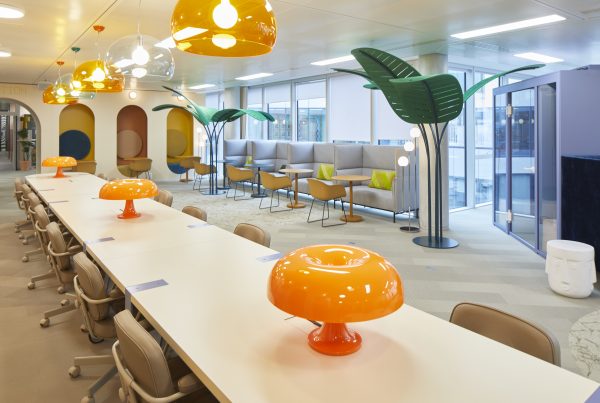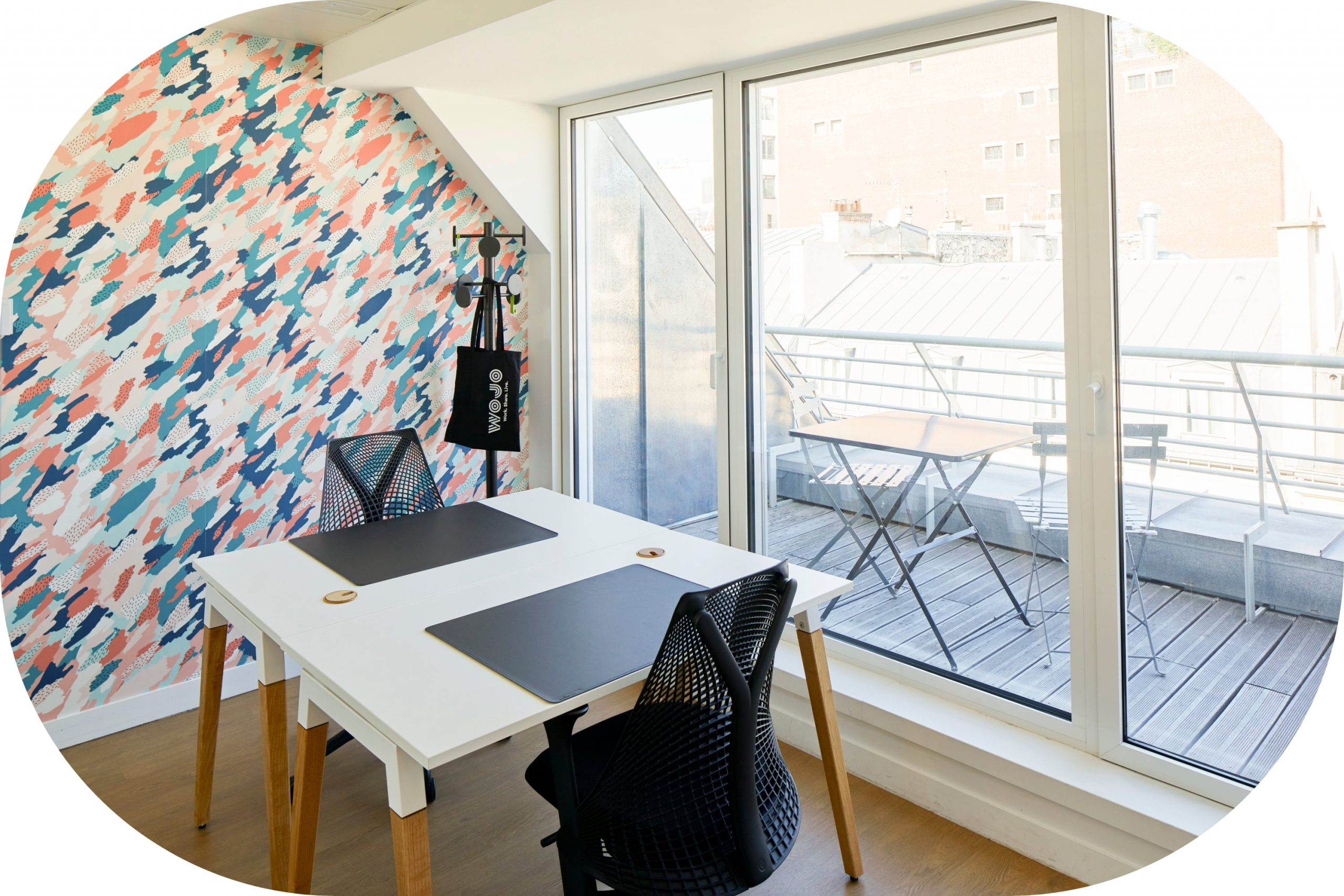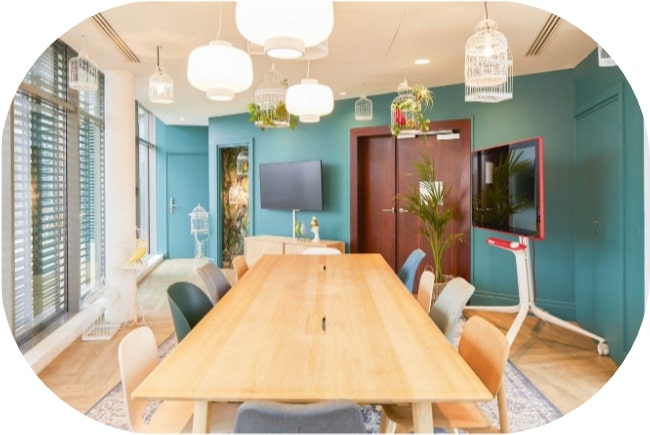The name of a new product, service or project, problem solving, out-of-the-box ideas to attract new consumers, thoughts on packaging… There are many opportunities to organise a brainstorming session… and even more reasons to miss it. With the spread of remote working, organising an effective creative meeting requires rigour: we share with you the best practices to apply.
1 – Adopt the right tools
To conduct a remote brainstorming session, you need a video conferencing tool. Some are free, such as Jitsi or Skype, others are paid or integrated into more complete collaborative solutions (Teams, Talkspirit, etc.).
You also need a collaborative whiteboard (Drawchat, Klaxoon, Mural, etc.). If the teams are not familiar with these tools, send a short user guide in your invitation, and allow ten minutes of hands-on exercises to start the brainstorming.
In a face-to-face setting, ideas are noted down as they come in on post-it notes stuck to the wall of the meeting room. In digital mode, the collaborative whiteboard can be used to list them, display moodboards, draw up diagrams, create associations… In short, to feed everyone’s creativity and centralise all the ideas, including the most far-fetched! That’s the whole point of brainstorming: an association between two unexpected ideas can lead to a big idea that is extremely effective.
2 – Setting the framework for brainstorming
What are you looking for? Write a precise brief before the meeting, describing the subject (product, problem, service, project, etc.) on which you are inviting your colleagues to reflect, the objectives, and the targets. This is an essential exercise which will help you to frame your thoughts to ensure that they meet your needs.
3 – Choosing the right cast
Quantity does not always mean quality, especially when it comes to generating a wealth of ideas. The right number? At least six people to ensure a good dynamic, but no more than ten, as the number of people becomes difficult to manage in a videoconference. The mistake not to make : inviting the entire communications department and forgetting the other teams. A good brainstorm is one that brings out new visions. There’s nothing like a mixed cast of people from different backgrounds to get you off your usual tracks.
4 – Set the rules for brainstorming
Have a facilitator to enforce the timing of the exercises and distribute the floor, and set rules at the beginning of the videoconference.
Only the facilitator’s microphone is open, and participants raise their hands to speak in turn or react to a proposal that has just been made. Criticism is not allowed, participants are not there to judge the ideas of others. There is a penalty (virtual coffee round, drawing of a hairy monster, etc.) for those who do not respect this. Mobile phones are also prohibited: ask everyone to put their phone on aeroplane mode at the beginning of the brainstorming meeting.
Also have a secretary, who notes down all the ideas that are brought up via a shared, interactive whiteboard, so that everyone can see what has been proposed at all times. This can lead to unexpected associations in the next steps.
5 – Organise ice breakers
Holding a brainstorming session via video conference rather than face-to-face is an ice breaker in itself. The participants are away from the office and their usual context, and this encourages creativity. Exercises to get to grips with the collaborative whiteboard can also be ice breakers, thanks to amusing visuals that the participants have to manipulate, a map of France where they can position themselves, etc.
Other ideas: invite everyone to choose the accessory of their choice and explain it to the rest of the group. You can also ask everyone to tell what they did at the beginning of the day but without talking about work, what they ate last night and who prepared it, in short, anything that helps them to think outside the box.
6 – Plan several different exercises
There are many brainstorming techniques, and their aim is to bring out the famous “storm of ideas” you are looking for! Here are some of them, adapted to a videoconference meeting, to help you build your programme. Each exercise should last between 10 and 15 minutes.
The blank page
To warm up, ask everyone to write down in a shared document everything that seems important to them, and what they would like to know about the project / service / product about which you are meeting. Does it go in all directions? That’s fine!
The silent round
Ask everyone to write on your virtual whiteboard a question about the product/service/project you are thinking about. Then give the group 10 minutes to add their answer to the question via notes stuck next to it. This is a recommended exercise if you have shy people in the group!
The role play
Each participant chooses a personality and puts himself in his shoes for the duration of the exercise. Madonna, Emmanuel Macron, Jeff Bezos, Mickey Mouse… will replace Jean-Michel, Nadia, Houcine and Ophélie on the screen, and propose their way of seeing the product / service / project in the ideas submitted.
Draw me an idea
Each member of staff draws a picture on a part of the virtual board that relates to the project / service produced, or a line of thought that he or she thinks needs to be explored further. Each drawing then goes around the team in a clockwise direction, and each person adds an additional image. Discussion of the final images will bring out unexpected associations and ideas.
7 – Applying democratic principles
The risk in brainstorming is that those who speak loudest will convince the others that their ideas are correct. To avoid this, end your meeting by giving everyone five minutes to vote for the three ideas they like best, by putting a little cross or virtual post-it on them. The two ideas that get the most votes will then be developed!
8 – Choose an out of the box venue to meet
The ideal way to brainstorm effectively is to meet face-to-face in the same place. This should gradually become possible again in the coming months, at least we hope so. To stimulate the creativity of the participants, there is nothing like giving them a meeting outside the office or an unusual space: in a park, a convivial place, a coworking space offering atypical meeting rooms… it’s up to you to choose according to the season and the theme of your brainstorming!







